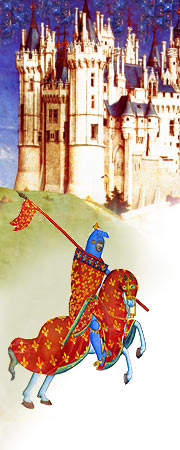|
Spanish Castles
Spain's location, as a peninsula divided
from the rest of Western Europe by the magnificent Pyrenees
Mountains, was a major factor in its medieval castle architecture.
In addition, this country's Moorish history left another indelible
mark on Middle Age structures.
Internal political struggles were the rule
during the early medieval years, but a dramatic turning point
came in 711, when an Islamic army landed in Andalusia. Two
years later, the Califs of Damascus claimed dominion over
the country. Influences by Germanic kings gave way to those
of eastern cultures. Strongholds, called castillos, were built
to battle Islamic forces. This is where we get our English
word-castle.
Spanish castles were often symmetrical
in design, but the countries varied colors of stone were used
to create beautiful patterns within the curtain walls. Islamic
influences can be seen in rounded towers and in the masonry.
Spain's flat landscape gave guards keeping watch in the towers
excellent vantagepoints to spot approaching armies. Germanic-influenced
architecture can still be seen in northern parts of Spain.
Medieval castles in Spain have a distinct
appearance by their frequent use of the torre del hominaje-a
keep with round machicolations at, and in between the corners.
|






